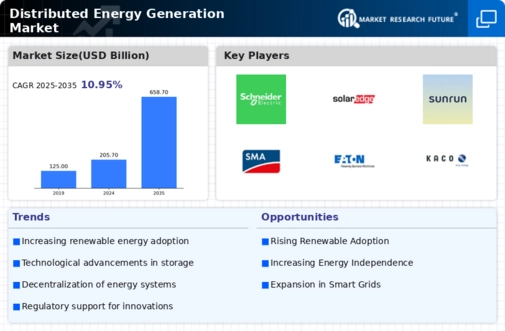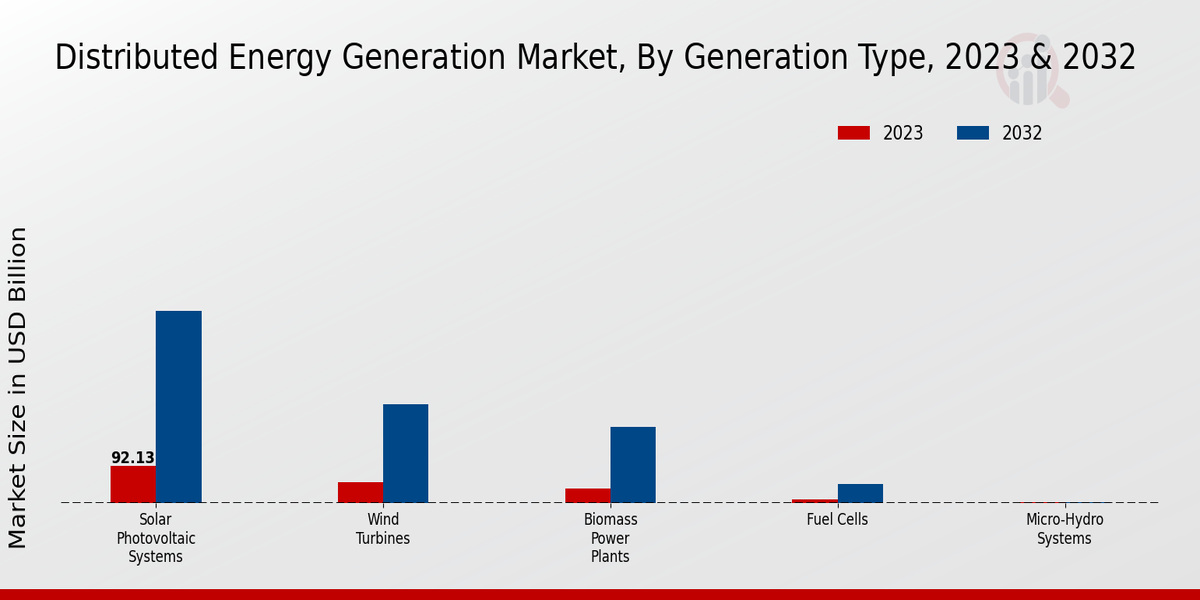Distributed Energy Generation Market Summary
The Global Distributed Energy Generation Market is projected to grow from 233.18 USD Billion in 2024 to 731.44 USD Billion by 2035, reflecting a robust growth trajectory.
Key Market Trends & Highlights
Distributed Energy Generation Key Trends and Highlights
- The market is expected to expand significantly, reaching 658.7 USD Billion by 2035.
- A compound annual growth rate (CAGR) of 11.16% is anticipated from 2025 to 2035.
- Starting at 205.7 USD Billion in 2024, the market demonstrates a strong upward trend in value.
- Growing adoption of renewable energy technologies due to increasing environmental concerns is a major market driver.
Market Size & Forecast
| 2024 Market Size | 233.18 (USD Billion) |
| 2035 Market Size | 731.44 (USD Billion) |
| CAGR (2025-2035) | 10.95% |
Major Players
Schneider Electric, ABB, SolarEdge Technologies, Sunrun, SMA Solar Technology, Eaton, KACO new Energy, Siemens, Enphase Energy, First Solar, Tesla, SunPower, General Electric, Ingeteam, Mitsubishi Electric

























